Citation for Amir AghaKouchak
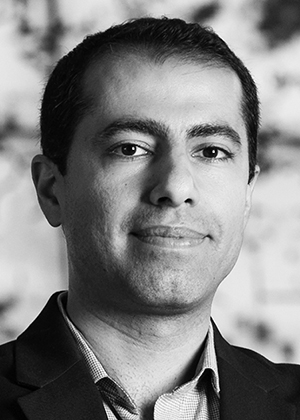
Dr. AghaKouchak is among the most creative and productive young scientists in our profession, and his scholarship, international standing, outreach, and service to the community are widely acknowledged and admired at an early stage of his career. Dr. AghaKouchak’s research accomplishments in hydrology and natural hazards and service activities provide ample evidence in the two primary criteria for the James B. Macelwane Medal: (1) depth, breadth of research, impact, creativity, and novelty and (2) service, outreach, and diversity.
Dr. AghaKouchak’s research bridges the traditional disciplines of hydrology, climatology, and remote sensing to address critical global water resource issues. His research combines remote sensing techniques and physically based and statistical approaches to improve the characterization, modeling, and prediction of large-scale hydrologic systems. His group developed a multivariate multi-index drought monitoring approach, named the Multivariate Standardized Drought Indicator (MSDI). Within a short period of time, other multivariate indicators were developed on the basis of the MSDI concept. The main innovation of the approach is that it allows integrating different types of data (e.g., precipitation, soil moisture, and runoff) for composite drought assessment.
His group also developed the first methodological framework for describing socioeconomic drought. Most drought monitoring frameworks primarily focus on large-scale atmospheric–land surface conditions and ignore the human dimension. He proposed a framework for assessing water availability while explicitly considering anthropogenic water demand scenarios and water supply infrastructure designed to cope with climatic extremes. His group developed a hybrid statistical-dynamical modeling framework for improving drought prediction. In this approach, unlike previous studies where a statistical model was used for postprocessing, a dynamical and statistical model work in parallel, but they are linked through an expert advice algorithm. The uniqueness of the approach is that it combines the strength of physically based dynamical simulations and the capabilities of statistical models. Another contribution was to formulate a novel multivariate framework for evaluating the risk of compound hazards. His group showed that the current flood risk assessment methods underestimate the actual risk of coastal flooding because they do not consider the compounding effects of ocean and terrestrial flooding.
Dr. AghaKouchak has achieved an extraordinary international standing through fundamental contributions at an early stage of his career and has been very proactive in service and outreach and in promoting diversity and inclusive excellence. In just a few years, he has earned the respect and admiration of his peers, and he will continue his leadership role in the field in the future.
—Isabella Velicogna, University of California, Irvine
Response
I sincerely thank Isabella Velicogna for leading the nomination and Upmanu Lall, Balaji Rajagopalan, and Vijay Singh for supporting the case. Receiving the Macelwane Medal is a humbling pleasure, but it is not an individual recognition. It reflects the work of my amazing collaborators, students, and postdocs.
Studying and working on three continents and interacting with exceptional scientists from around the world have made my journey very exciting! When I was an undergraduate freshman, I was determined to go into design and construction engineering. An undergraduate research experience in my sophomore year with glaciologist Fariborz Vaziri changed my career path, and I became a hydrologist. I was incredibly lucky to work with Andras Bardossy and Emad Habib, who introduced me to statistical hydrology and radar science. Joining Soroosh Sorooshian’s group as a postdoctoral fellow was a life-changing and inspiring experience! Soroosh introduced me to the world of remote sensing and changed my perspective toward research. I could not have imagined a more generous mentor and role model, and I cannot thank him enough for his unwavering support, encouragement, and mentorship over the years. During my postdoc, I had the privilege of collaborating with amazing scientists, including Kuo-lin Hsu, Bisher Imam, Xiaogang Gao, and Jialun Li—a great team with endless ideas!
I thank the University of California, Irvine, for taking the leap of faith to appoint me as a faculty member, where I have had the good fortune of working with a diverse group of exceptional colleagues. Special thanks go to Brett Sanders and Stan Grant for integrating me into their interdisciplinary projects and broadening my research, to Richard Matthew and David Feldman for their insights on the broader relevance of our work, to Steven Davis for sharing his brilliant mind and stimulating ideas, to Jim Randerson for his thought-provoking views, to Bill Cooper and Phu Nguyen for their stunningly positive attitude, and to Efi Foufoula-Georgiou for her critical thoughts and the opportunities she has created.
Over the past 10 years, I have had the pleasure of working and publishing with nearly 300 phenomenal scientists. I cannot possibly mention everyone here, but I would like to acknowledge the amazing interactions and stimulating discussions that I have had with Gianfausto Salvadori, Kaveh Madani, Tom Phillips, Ali Nazemi, Andy Wood, Ali Mirchi, Ghassem Asrar, Reza Khanbilvardi, Marty Hoerling, Hamid Moradkhani, Shrad Shukla, Giuliano Di Baldassarre, Jakob Zscheischler, Hamid Norouzi, Travis Huxman, Nasrin Nasrollahi, Jay Lund, Mark Svoboda, Marzi Azarderakhsh, Brian Tarroja, Chiyuan Miao, Farshid Vahedifard, Philip Ward, Thomas Wahl, Sonia Seneviratne, Jasper Vrugt, Qingyun Duan, Brian Skahill, M. R. Kavianpour, Salvatore Grimaldi, Elmira Hassanzadeh, Ali Alaiepour, Carlo De Michele, Reza Najafi, Farhad Yazdandoost, Yue Qin, and Fabrizio Durante. I have learned much from and been influenced by many more scientists than I can list here.
Most importantly, I owe this recognition to my current and former students, postdocs, and visiting scholars whom I have had the honor to work with. I accept the Macelwane Medal with humility and gratitude on their behalf: Linyin Cheng, Ali Mehran, Elisa Ragno, Alireza Farahmand, Omid Mazdiyasni, Charlotte Love, Felicia Chiang, Hassan Anjileli, Alexandre Martinez, Aneseh Alborzi, Mohsen Niknejad, Lisa Damberg, Matin Rahnamay, Yunxia Zhao, Jiefeng Wu, Qiaohong Sun, Samaneh Ashraf, Carlos Lima, Zengchao Hao, Shahrbanou Madadgar, Hamed Moftakhari, Mojtaba Sadegh, Iman Mallakpour, Simon Papalexiou, and Laurie Huning. I wholeheartedly appreciate their hard work and dedication and want to thank them for their patience with me!
Finally, I am grateful for the tremendous support I have received from my parents. My heartfelt thanks to my lovely wife, Nasrin, who is an infinite source of support. Back in 2010, Nasrin and I attended the AGU Honors Ceremony for the first time. “I am sure I will see you on that stage 10 years from now,” Nasrin whispered into my ear while Rosalind Rickaby was giving her Macelwane Medal Lecture. I have to admit that she has always been right! I should also mention my 6-year-old son, Kian (whose favorite magazine is AGU’s Eos), and my almost 2-year-old daughter, Kimia, who often have to deal with my time away from home. I owe them so much!
—Amir AghaKouchak, University of California, Irvine
Citation for Anton Artemyev
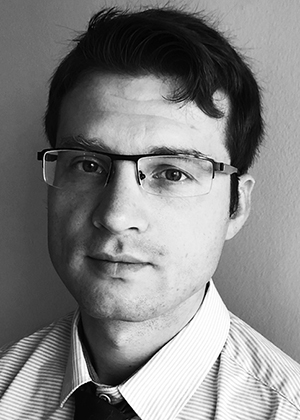
Dr. Artemyev is one of the premier plasma theorists in the world with a unique ability to work equally well with theory, models, and observations. His early work on wave-particle interactions in Earth’s radiation belts was transformational. He went beyond quasi-linear theory to describe comprehensively the relative importance of particle nonlinear acceleration and scattering by strong amplitude waves, particle trapping, curved or converging magnetic fields, and high obliquity. In 2012 he established a novel theory of how kiloelectron volt energy electrons are trapped and accelerated in the oblique whistler wave potential and are accelerated to hundreds of kiloelectron volts as they move along a dipole field increasing toward the planet. He then modeled electron pitch angle scattering losses competing with the above acceleration and provided analytical estimates of electron lifetimes applicable in radiation belt models. His 2016 review paper on oblique whistler waves has already become a classic.
Since 2014, he has incorporated nonlinear effects into the evolutionary equations of plasma phase space density, previously accounting only for quasi-linear phenomena. He showed that not only whistlers but also time domain structures and kinetic Alfvén waves can nonlinearly accelerate cold electrons and that the pervasive magnetosonic waves most often also require a nonlinear description. This was a major breakthrough in our understanding of how relativistic radiation belt electrons are sourced from ambient, cold plasma electrons.
With regard to plasma current sheets, he predicted theoretically and revealed observationally that a magnetic shear develops naturally to balance the magnetic pressure external to the current sheet. He expanded prior treatments to include electron temperature anisotropy, all types of ions, and sheared fields. He advanced and observationally validated theories of particle dynamics in plasma discontinuities using his namesake Artemis mission. He observed the telltale signatures of the current-carrying ions and electron anisotropies at Earth. He then applied his current sheet theories to the Jovian and Martian magnetotails, the solar wind, and the solar corona. His 2013 review of the kinetic properties of current sheets has become a recommended read for space physics courses.
Anton is generous with his time to dozens of students, junior researchers, and colleagues all over the world alike, epitomizing AGU’s motto of unselfish cooperation in research. He serves as a Journal of Geophysical Research associate editor, has been recognized with two citations for excellence in refereeing, and is a dynamic participant in the National Science Foundation’s Geospace Environment Modeling program. His breadth of research is enviable even by senior scientists. He is a leader among leaders.
—Vassilis Angelopoulos, University of California, Los Angeles
Response
First, I would like to thank Vassilis Angelopoulos for his nomination and Lev Zelenyi, Forrest Mozer, and Masahiro Hoshino for their strong support of this nomination. I’m deeply grateful for all the things that I learned from you during different stages of my career. Working with you, I have understood how practical the good theory can be and how useful observations become being supported by reliable models. In the era of strong specialization, I was really lucky to have a chance to work with scientists ignoring boundaries between data and models, theory, and experiment. I am also truly thankful to the Macelwane Medal Committee and AGU for this distinct honor.
Starting from fully theoretical studies at the Space Research Institute in Moscow, I learned many approaches and methods from Lev Zelenyi and Anatoly Neishtadt, who have basically determined my way of thinking and working in theory. But beyond the theory, I was truly happy to collaborate with and be taught by Anatoli Petrukovich, Rumi Nakamura, and Wolfgang Baumjohann during my frequent visits to the Institut für Weltraumforschung in Graz. At that time, the extremely rich data archive of the Cluster spacecraft mission was released, giving me a chance to look on space science from a perspective that is quite new to me. Working with the magnetotail dynamics, I would never get an experience in the inner magnetosphere and solar wind physics if it were not 2 years of my postdoc research at the Laboratoire de Physique et Chimie de l’Environnement et de l’Espace (LPC2D) in Orleans, France, with Vladimir Krasnoselskikh and Oleksiy Agapitov. Overall, my career greatly benefitted from working with many of my friends and colleagues, particularly Ivan Vasko, Didier Mourenas, Alexei Vasiliev, Dmitri Vainchtein, Andrei Runov, Xiaojia Zhang, Antonella Greco, and Gaetano Zimbardo, as well as many other colleagues with whom I was lucky to collaborate.
I am also really thankful to my colleagues at the University of California, Los Angeles (UCLA), for the wonderful atmosphere, scientific discussions, and constructive approach to many of my controversial ideas. I would like to acknowledge the Time History of Events and Macroscale Interactions during Substorms (THEMIS) team, whose work provides us with an inexhaustible set of topics for investigations. Finally, I’m deeply grateful to all the students from UCLA and the Space Research Institute with whom I had a chance to work.
—Anton Artemyev, University of California, Los Angeles
Citation for Emily V. Fischer
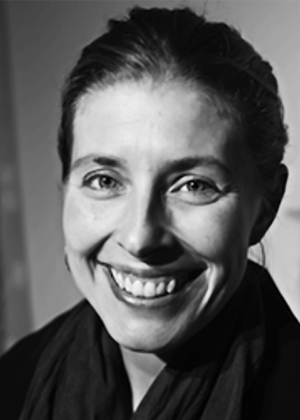
Emily Fischer is a dynamic leader in atmospheric chemistry. She is pushing the envelope of our understanding of atmospheric reactive nitrogen and is a visionary leader in efforts to bring gender diversity to atmospheric sciences.
Tropospheric ozone is not emitted but made in situ from hydrocarbons, sunlight, and oxides of nitrogen. Nitrogen oxides are usually short-lived but can be carried to distant locations via the formation of the temporary reservoir species peroxyacetyl nitrate (PAN). While we have been able to measure PAN in situ, for some time now, a global perspective was lacking. Fischer used the Tropospheric Emission Spectrometer (TES) instrument aboard the Aura satellite to develop global maps of PAN. This was an extremely challenging feat, one that was widely assumed to be impossible because of the low contrast in the infrared spectrum of PAN. Using these measurements, Fischer has evaluated model predictions of column PAN over the Atlantic and enabled quantification of summertime hemispheric transport. Fischer has an exceptional body of work on wildfires. She showed that climate change is likely to impact future human- and lightning-ignited wildfires similarly. She led the Western Wildfire Experiment for Cloud Chemistry, Aerosol Absorption and Nitrogen (WE-CAN) C-130 aircraft field campaign, a National Science Foundation (NSF) program, in the summer of 2018.
Fischer is a pioneer in broadening participation from underrepresented communities in science, technology, engineering, and mathematics (STEM) fields and, in particular, that of women in geosciences. She leads research to understand how to enhance access to Earth science opportunities by women and other marginalized scientists. Her NSF-funded research project (Promoting Geoscience Research, Education and Success, PROGRESS), designed in collaboration with social scientists, is building strategies to support the persistence of undergraduate women interested in the Earth sciences. She has published extensively on this topic. Her longitudinal studies of PROGRESS cohorts demonstrated the importance of connecting undergraduate women to female role models and showed that the odds of a female undergraduate student persisting within an Earth science major approximately doubled for each female role model they identify. The role model approach in PROGRESS is patterned after the highly successful Earth Science Women’s Network (ESWN) to which Professor Fischer has provided ongoing leadership. On its behalf she accepted a 2018 Presidential Award for Excellence in Science, Mathematics and Engineering Mentoring (PAESMEM) and a 2017 American Meteorological Society Special Award.
Please join me in congratulating Emily Fischer for her honor as a recipient of the James B. Macelwane Medal.
—Ronald C. Cohen, University of California, Berkeley
Response
Thank you, Ron, both for your kind words in this moment and for always teaching me something new!
This award has given me a chance to reflect on teams that I have contributed to over the past decade. Like many disciplines, atmospheric chemistry moves forward via teamwork. Ideas nurtured by teams, particularly teams including diverse perspectives and disciplines, have allowed me to see new questions that would have otherwise been invisible to me. Leading the WE-CAN team has been the ultimate challenge. Thankfully, this team is filled with some of the most competent, humble, and collaborative individuals. Frank Flocke and Bob Yokelson provided exceptional logistical mentorship. Shane Murphy and Lu Hu continue to be fantastic colleagues. I have learned so much from Vivienne Payne and her teammates at the Jet Propulsion Laboratory. They have opened my eyes to satellite observations, so much so that I dream of new missions. I would like to thank the PROGRESS team, particularly Paul Hernandez and Brittany Bloodhart, for your patience with me as I learned how to lead a social science project. Finally, I learned enormously from ESWN. This organization has had an immense impact, and I have to give credit to Yi-wen Huang for encouraging me to get involved. I also have been reflecting on my team at Colorado State University (CSU). Ilana Pollack has been the ultimate partner, ensuring the success of our ambitious field projects. I cherish my former and current students, who always impress me with their meticulousness and creativity. I would also like to thank our CSU staff for supporting all of our science. I appreciate Dave Randall, Sonia Kreidenweis, and Jeff Collett for constantly role modeling excellent leadership.
There have also been so many individuals who have influenced me. Alex Pszenny, Jack Dibb, and Bob Talbot taught me how to write. Thanks to Jennie Moody. You were the first female faculty member to mentor me; I should have thanked you sooner for showing me how to combine meteorology and chemistry. Dan Jaffe made my Ph.D. fun—thanks for setting a high bar. I would like to thank Daniel Jacob and Dan Schrag for providing some of the best scientific and career advice. I also learned so much from Jennifer Logan. Finally, there are many colleagues whom I am grateful for on a weekly basis. Thank you to Melissa Burt, Abby Swann, Rebecca Barnes, Sheryl Magzamen, and Meredith Hastings for all your energy and insights.
—Emily V. Fischer, Department of Atmospheric Science and School of Global Environmental Sustainability, Colorado State University, Fort Collins
Citation for Francis A. Macdonald
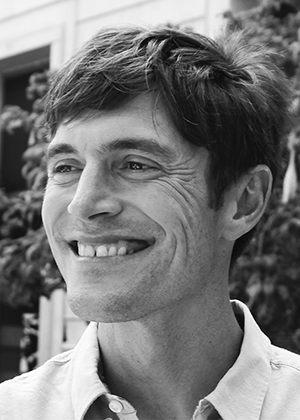
Francis Macdonald is a field geologist by training who now tackles questions ranging from basin development and tectonics through to paleoenvironmental reconstructions and long-term climate change. In each of these disciplines, the impact that both he and his students have had is strikingly clear. As an undergraduate at the California Institute of Technology (Caltech) nearly 20 years ago, Francis was an author on a now classic report in Science showing that this rock traveled from Mars to Earth without any significant heating, demonstrating the possibility of the interplanetary transport of life. He then spent a year in Australia honing his skills as a field geologist by completing studies of several Precambrian impact craters that had been started by the late Eugene M. Shoemaker before a tragic high-velocity impact took him from us.
For his Ph.D. work Francis cracked several critical knotty problems in Neoproterozoic stratigraphy related to “snowball Earth” events that had been bothering the community for many years. In the process, he brought order to the tumultuous transition from the microbial world of the Precambrian to the familiar one of macroscopic organisms. He won acceptance for the most radical climate change hypothesis (snowball Earth), demonstrating that there were only two such events during Proterozoic time, that they were globally synchronous, that the glacial deposits in North America were indeed low latitude, and that the Sturtian snowball Earth event lasted nearly 60 million years—unprecedented in Earth history. Along with developing data constraining the timing, extent, and nature of glaciation, his more recent work has been focused on why Earth has experienced extreme climate change and what controls Earth’s climate state. This work has explored the theoretical limits of albedo catastrophes and the role of changes in global weatherability and carbon dioxide sinks on Phanerozoic climate.
Francis has boundless energy and works on countless terrains, giving him a truly unique and global perspective on questions of interest. His choice of geological problems to tackle, and ability to purse them to completion, is second to none. His attention to the basic geology and detailed stratigraphic relationships and willingness to do detailed geological field maps in wild (and actually dangerous) areas have allowed him to locate the critical sections that reveal the nature of fundamental events in Earth history during one of the most environmentally exciting intervals of geological time.
Please join us in celebrating Dr. Francis A. Macdonald for his receipt of the James B. Macelwane Medal.
—Joseph Kirschvink, California Institute of Technology, South Pasadena
Response
As an undergraduate, Joe Kirschvink gave me incredible opportunities to work in his lab. He inspired me to be a scientist. I thank the Caltech Division of Geological and Planetary Sciences for their training and patience. Particularly, classes with Jason Saleeby and Brian Wernicke helped me discover field geology. I feel incredibly lucky to have stumbled upon a vocation that fits my skills and disposition so well.
After college, I was supported by the Watson Foundation to map the geology of meteorite impact structures in Australia. I used the housing budget to buy a field vehicle and immersed myself in the Outback. I thank the Watson Foundation for taking a great risk on me and for supporting young people to follow their passion. I also thank Carolyn Shoemaker for sharing Gene’s work with me and bringing me into her home and family.
At Harvard, Paul Hoffman gave me freedom to explore and to fail. He supported reconnaissance trips to Alaska and Mongolia that became the core of my thesis. To this day, Paul continues to challenge me about every aspect of my work while also supporting me at every turn. Paul has been the perfect adviser for me and has developed into my favorite geology pen pal. His coupled intellectual generosity and youthful curiosity are an inspiration.
I thank Harvard’s Department of Earth and Planetary Sciences for investing in me. I was blessed not only with great students, resources, and a caring chair in John Shaw but also colleagues who pushed me both in depth of rigor and breadth of relevance to fields beyond traditional geology.
Any successes I have had in geology have been due in part to great collaborators. I particularly thank Tanja Bosak, Phoebe Cohen, Jim Crowley, Galen Halverson, John Higgins, Oli Jagoutz, David Johnston, Davey Jones, Paul Karabinos, Bill McClelland, Tony Prave, Sara Pruss, Alan Rooney, Mark Schmitz, Dan Schrag, Erik Sperling, and Nick Swanson-Hysell.
My graduate and undergraduate students have inspired me to be a better teacher and mentor and have pushed my science. I thank my former graduate students, Uyanga Bold, Athena Eyster, Emmy Smith, and Justin Strauss; my current graduate students; and Lyle.
Last, I thank my family for supporting my weird rock whispering. My parents have provided a strong foundation, inspiration, and continued encouragement. Win is the greatest field assistant in the world. Kelsey and Zoe give me love and joy.
—Francis A. Macdonald, University of California, Santa Barbara
Citation for Erik van Sebille
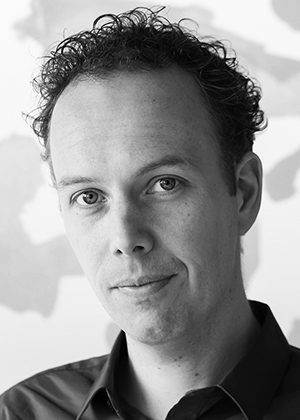
Erik van Sebille has quickly established himself as a world-leading scientist in applying Lagrangian techniques to study a range of oceanographic problems. His work has fundamentally advanced our understanding of ocean dynamics and the global transport of plankton and plastics. Erik is a highly creative and skilled scientist, with a knack for seeing opportunities to produce new scientific analyses to address tough problems in areas that have a direct societal impact. Erik works in a highly collaborative way, engaging with many groups and communities, applying his wares to fields ranging from oceanography through to mathematics, paleoclimate, and marine ecology.
In his research, Erik combines models and data to study how currents move tracers and particulates around the global ocean. This has resulted in high-impact papers in Lagrangian oceanography and in the ocean transport of water, heat, nutrients, microbes, plankton, and plastic around the world. With a keen eye to being an enabler of research for others, Erik has led the development of a new, cutting-edge open source software framework for Lagrangian ocean analysis, known as OceanParcels (oceanparcels.org), which is now widely used by the community. Over the past decade Erik has rapidly broadened his work using Lagrangian techniques to track more than just water masses: exploring how ocean currents determine the fate of plastic, plankton, and other floating matter. Erik’s work on plastics in the ocean has had a remarkable impact on our understanding of this global environmental problem.
Apart from being an exceptional scientist, Erik is known for his strong commitment to public outreach and community engagement. He is a regular commentator in the media, a superb teacher and communicator, and a willing mentor to research students and early-career scientists. Erik has taken on leadership roles in both national and international science programs. Erik’s insights are deep, and the problems he works on are vital for protecting the world’s ocean environment.
On a personal note, I have to say that it has always been a great pleasure to work with Erik. I have marveled at his energy and passion for ocean science, his flair for coming up with exciting new problems to tackle, and his ability to devise novel applications of Lagrangian methods. I am certain that we will be hearing much more about Erik’s discoveries for many years to come. Please join me in congratulating Erik for this well-deserved honor of the James B. Macelwane Medal.
—Matthew H. England, University of New South Wales, Sydney, Australia
Response
Thank you, Matt, for these very kind words. And thanks to you and my other supporters and nominators for their time and efforts. I truly am very excited and humbled to receive this James B. Macelwane Medal.
I’ve been lucky in my career to have been surrounded by inspiring, good-natured supervisors, colleagues, and collaborators, who’ve shown me how much fun it can be to be an academic: Will de Ruijter, Peter Jan van Leeuwen, and Femke Vossepoel at Utrecht University encouraged and inspired me to find my own edge in research; Lisa Beal and Bill Johns at the University of Miami’s Rosenstiel School of Marine and Atmospheric Science instilled a huge appreciation for oceangoing research and the hardship and effort that collecting data in the field requires; Matt England at the University of New South Wales Climate Change Research Centre has encouraged me to look beyond physical oceanography and to collaborate with biologists, geneticists, mathematicians, archaeologists, ornithologists, fisheries economists, and many other fields I’ve since published with; Joanna Haigh and Martin Siegler at Imperial College London’s Grantham Institute have introduced me to policy and advocacy and shown me how to make a real impact; and Henk Dijkstra at Utrecht University gives me full freedom to explore and chase my own interests. Add to that all the fantastic and inspiring collaborators and coauthors (over 480 of them!), and I can really say I’m standing on the shoulders of giants. Looking back, it may seem like my career path was all nicely planned, but of course, much of this was serendipity and being in the right place at the right time. I am fully aware and appreciate that I’m privileged and realize that not everyone has access to these chances and opportunities.
Our global society is changing so fast right now that we scientists cannot simply keep doing our work like we’ve always done. To stay relevant, we need to change every aspect of our research: planning our research through cocreation with the broader society; conducting our research in a fully transparent, inclusive, and collaborative way; communicating our research to peers and the broader public; and getting recognized and rewarded in an unbiased way; society rightly demands radically open science. The tools and ideas for this radically open science are in place; now it’s up to us as a scientific community to embrace them. These are exciting times!
—Erik van Sebille, Utrecht University, Netherlands
Citation:
(2020), AghaKouchak, Artemyev, Fischer, Macdonald, and van Sebille receive 2019 James B. Macelwane Medals, Eos, 101, https://doi.org/10.1029/2020EO138589. Published on 14 January 2020.
Text © 2020. AGU. CC BY-NC-ND 3.0
Except where otherwise noted, images are subject to copyright. Any reuse without express permission from the copyright owner is prohibited.
